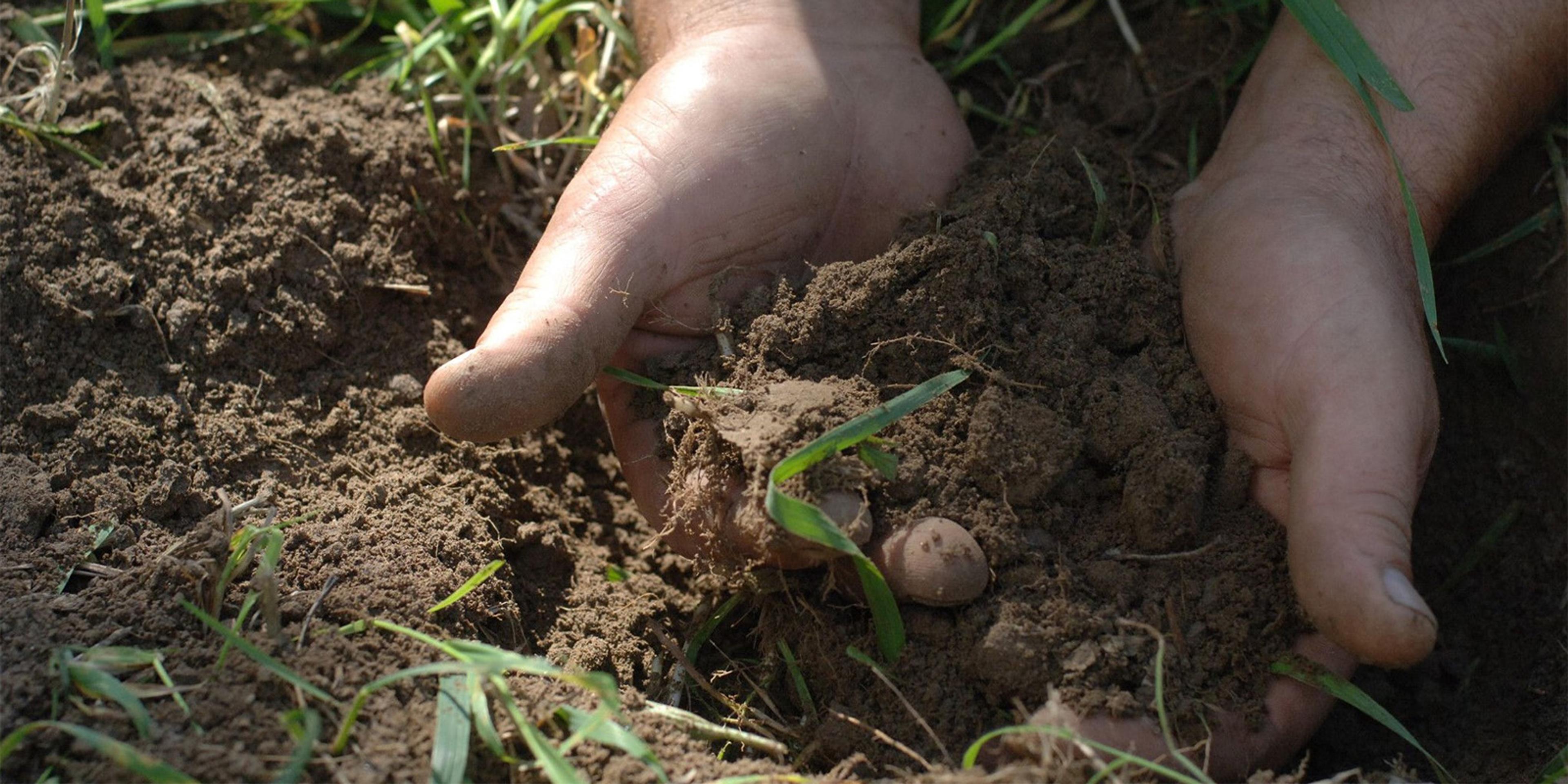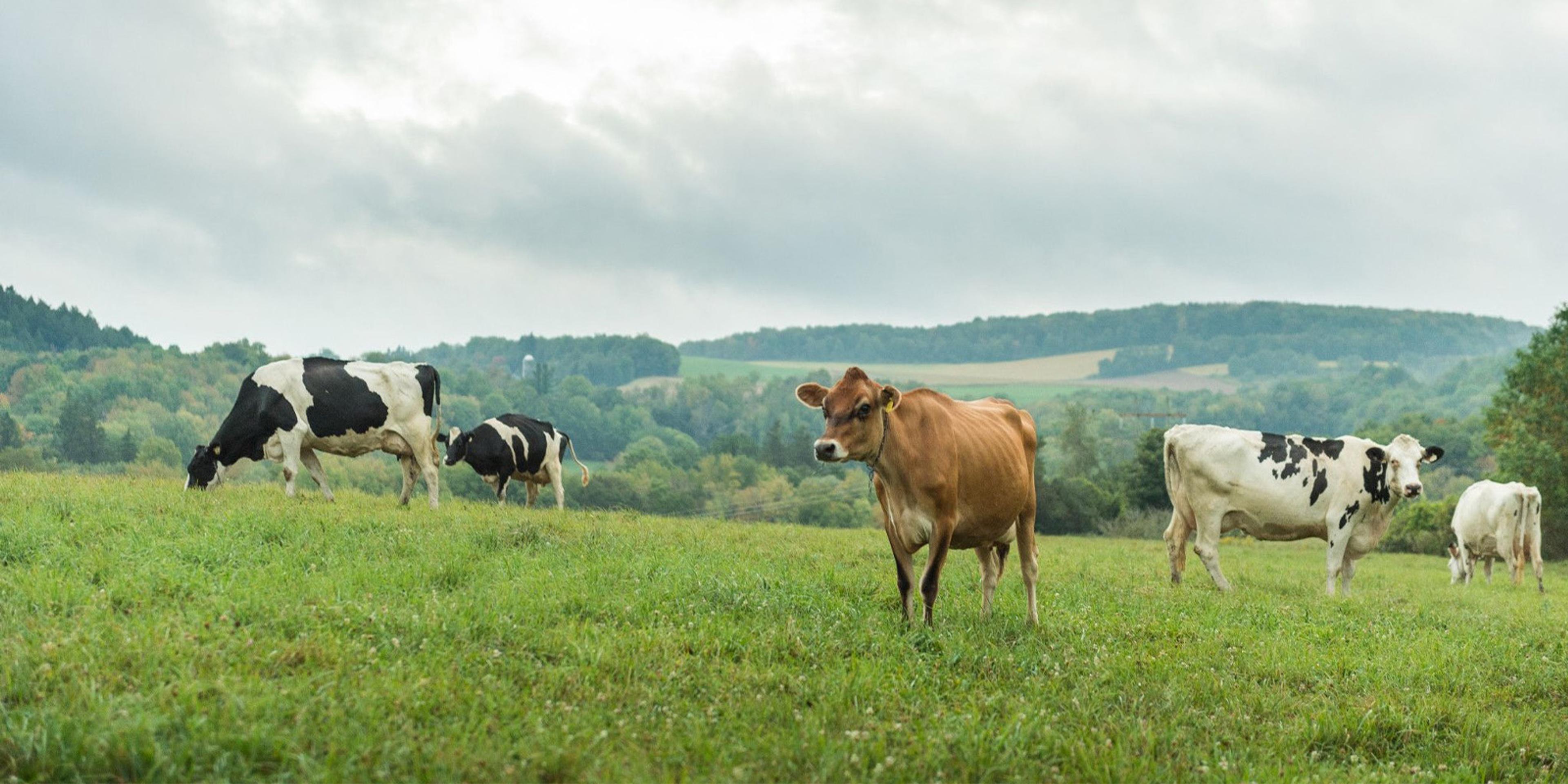
Earth
Friend or Foe? 5 Pros and Cons of Carbon
Carbon serves as the building block of life. It’s an abundant element found in all living organisms as well as rocks, water and the atmosphere. In fact, each time you eat dinner, take a breath or drive a car, you are part of the carbon cycle.
Carbon is element No. 6 on the periodic table. Although it makes up just 0.025% of the Earth’s crust, carbon forms more compounds, including coal, dolomite, marble and limestone, than all of the other elements combined. Like iron, tin, lead, copper and gold, carbon was one of the few elements known in the ancient world.
Organic Valley thinks about carbon a lot. We are aiming to be the first major dairy brand to achieve carbon neutrality by 2050.
The amount of carbon we have on Earth doesn’t change, which means the carbon we have today is the same as it was millions of years ago. What is constantly evolving is the form and location of our planet’s carbon, a process called the carbon cycle.
Are Carbon and Carbon Dioxide the Same?
Carbon and carbon dioxide are not the same. Carbon is a basic element with the abbreviation of C on the periodic table while carbon dioxide is a chemical compound created when one carbon atom (C) bonds with two oxygen (O) atoms and becomes CO2. At room temperature, carbon is a solid while CO2 is a gas.
Although CO2 wouldn’t exist without carbon, the two are not the same, and the biggest difference is their impact on the environment. Carbon dioxide or CO2 is found in the atmosphere. Activities like burning fossil fuels, changing land use and manufacturing concrete from limestone release carbon into the atmosphere, which mixes with oxygen to create a powerful greenhouse gas that has a negative impact on the environment. There is currently more CO2 in the atmosphere than at any time in the last 3.6 million years.
Given that carbon is essential to our ecosystem and can also have detrimental effects, let’s look at the pros and cons of carbon and how we can strike the best balance.

5 Big Benefits of Carbon
No. 1 Carbon makes the food that sustains us: Organic forms of carbon are found in plants, animals and microbes. Not only is CO2 an essential element for photosynthesis to make plants grow, plants use the carbon-based building blocks of photosynthesis to develop fibers, stems, leaves, flowers, grains, fruits and roots. Research shows that atmospheric carbon dioxide might even boost crop yields (because it speeds photosynthesis and promotes growth). Without CO2, there would be no food on your dinner plate.
No. 2 Carbon keeps us warm: Greenhouse gases trap heat from the sun and prevent it from escaping the Earth’s atmosphere and returning to space. In addition to keeping the ambient outdoor temperature from getting too cold, carbon also keeps you comfortable in your home. Fossil fuels like coal, oil or gas are made up of concentrated carbon. These carbon-based fuels are the most abundant energy sources in the world and supply up to 85% of our global energy use. Without carbon, most of us wouldn’t be able to turn up the thermostat in the winter to stay toasty and warm.
No. 3 Carbon improves soil health: Growing food (and other plants) releases substances that contain carbon into the soil that serves as food for the microbial communities in the soil that can fix nitrogen and build soil health.
No. 4 Carbon contributes to biodiversity: On land, trees draw CO2 from the atmosphere and store it in the roots, trunks, branches and leaves; 50% of dried tree material is carbon. A forest filled with diverse tree species excels at storing (or sequestering) carbon.
No. 5 In the ocean, carbon dioxide dissolves in water. The ocean holds 50 times more carbon than the earth, and marine organisms use the abundant element to build their shells. Carbon also helps aquatic plants grow and is a key element in fish meal, seaweed and kelp-based products that are hailed as superfoods.
This video explains the carbon cycle:
5 Big Cons of Carbon
No. 1 Carbon contributes to climate change: Carbon dioxide is in the atmosphere all the time, but human activities like burning fossil fuels and cutting down trees increase the amount of CO2 in the atmosphere. Currently, human activities account for 80% of all greenhouse gas emissions, which contributes to a changing climate that includes increases in extreme temperatures and severe weather events.
No. 2 Carbon puts species at risk: Rising CO2 levels have been linked to increased ocean acidification and mass species extinctions. Some species have already started moving their habitats to higher elevations to escape increasing temperatures, and up to 1 million species are facing extinction as a result of a changing climate. Each degree of warming increases the risk to species on land and in the waters.
No. 3 Carbon threatens our food supply: Carbon is essential for growing food and forms the basis of the materials we depend on to package and ship food, but too much carbon has a negative impact on agriculture.
Rising levels of carbon dioxide have been linked to decreased amounts of protein and minerals in crops like wheat, soybeans and rice. Climate change, which could lead to more frequent and severe droughts and floods, could also make it harder for farmers to grow crops and raise animals.
No. 4 Carbon could hurt livestock: Climate change could increase the number of heat waves, putting strain on livestock. Heat stress could increase vulnerability to disease and reduce milk quality. Reduced grain and forage quality are possible consequences of higher CO2 levels, making it more difficult for pastures to support cattle (and other grazing animals).
No. 5 Carbon could harm our health: Extreme heat has been linked to an increase in heart attacks, strokes and other cardiovascular events; heat stress is the main risk factor for developing chronic kidney disease, and air pollution has been linked to respiratory illnesses, including pneumonia and chronic obstructive pulmonary disease, that are responsible for 6.4 million deaths annually.
A warming climate has also allowed mosquitoes, ticks and other disease-carrying insects to expand their geographic range, and that spread has increased the risk of infectious diseases by 58%.

The Miller family’s organic farm in New York.
Striking the Right Balance
On its own, carbon is harmless, but when it bonds with oxygen molecules and forms CO2, there can be detrimental effects so it’s important to strike a balance. Carbon farming can help.
Carbon farming involves adopting practices that help remove CO2 from the atmosphere and store it in plant material or the soil. Sustainable farming practices — including spreading manure, planting cover crops to help slow erosion and improve soil health and minimizing soil disturbances through no-till practices — help sequester (or capture) carbon. Grazing cattle helps, too. Studies show that letting cattle graze on pasture reduces the amount of nitrates leaching into groundwater, improves water retention and promotes healthier soil.
Organic Valley farmers are doing their part to fight the climate crisis. Our farms use pastures for grazing and outdoor access, and that pasture-based approach helps sequester carbon under the soil. In fact, Organic Valley dairy farms average 24% lower greenhouse gas emissions compared to the average U.S. dairy farm, making us a low-carbon nationally distributed dairy cooperative.
The Organic Valley Carbon Insetting Program awards farmers for reducing their emissions and for sequestering more carbon. The cooperative is working with 500 Organic Valley member farms to adopt new carbon reduction and removal practices. Some of the climate mitigation strategies include improvements to grazing, pasture and croplands, manure management, feed supplements, agroforestry and solar energy.
Many human activities contribute to excess CO2 and contribute to climate change — and that means it’s possible to alter our behavior to have a positive impact on the environment.
How Can We Reduce Carbon Emissions?
Weather-proofing your home can reduce your carbon-based energy use; maintaining an eco-friendly lawn; driving a fuel-efficient vehicle (or walking, biking or taking public transportation, when possible) can cut down on automobile emissions; and supporting sustainable, organic farms can reduce your carbon footprint. Remember, your efforts can go a long way toward supporting a healthier planet.
Jodi Helmer is a freelance writer whose work has appeared in magazines like National Geographic Traveler, American Way and Hobby Farms. She never turns down a chance to spend the night on a farm, especially if there is an opportunity to snuggle a sheep or caress a cow.
Related Articles
- Tags:
- climate,
- environment


















